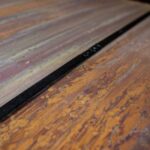Imagine flying from New York to Los Angeles in under three hours – and doing it quietly. That’s the promise behind NASA and Lockheed Martin’s experimental supersonic jet, the X-59, which completed its first test flight on Tuesday (28 October). The aircraft could revolutionise air travel by combining speed with silence, eliminating the thunderous sonic boom that had grounded previous supersonic dreams.
The sleek jet lifted off just after sunrise from Palmdale, California, gliding over the desert skies before landing safely near NASA’s Armstrong Flight Research Centre. Although it flew below the sound barrier this time, the test confirmed the aircraft’s structural performance and handling. NASA hailed the flight as a “significant milestone” in the effort to make supersonic passenger travel viable once again.
Tackling the Sonic Boom Problem
Aircraft capable of breaking the sound barrier have existed since the late 1940s, but their deafening “sonic booms” have long restricted their use over populated areas. The loud shockwaves produced as planes exceed 1,235 kilometres per hour led to bans on supersonic flights over land in the United States and other countries.
Lockheed Martin’s X-59 seeks to change that. The jet has been engineered to fly at supersonic speeds while generating only a “gentle thump” instead of the explosive noise typically associated with breaking the sound barrier. NASA hopes the aircraft’s quieter design will convince regulators to lift restrictions and open the skies to faster commercial routes.
From Concorde to the X-59
The last commercial supersonic aircraft, the Concorde, operated by British Airways and Air France, offered transatlantic flights between the 1970s and early 2000s. Its retirement in 2003, following a tragic crash three years earlier and dwindling passenger interest, brought an end to the era of supersonic passenger travel.
NASA and Lockheed Martin’s new collaboration aims to revive that dream, this time with a focus on sustainability, safety and community acceptance. If successful, the X-59 could cut travel times between major cities, like New York and Los Angeles, by nearly half, reshaping the future of global connectivity.
A Quiet Step Toward the Future
The X-59, measuring around 100 feet in length, was developed at Lockheed Martin’s renowned Skunk Works facility, known for pioneering cutting-edge aerospace projects. While this week’s flight did not reach supersonic speeds, NASA officials described it as a crucial early step in proving the aircraft’s readiness for more advanced testing.
Future trials will focus on flying the jet at supersonic speeds over select communities to gauge public response to its reduced noise signature. If the results are favourable, it could pave the way for a new generation of commercial jets that combine speed with silence.
#NASA #Lockheed #Martins #X59 #slash #coasttocoast #flight #times #silence #sonic #boom


